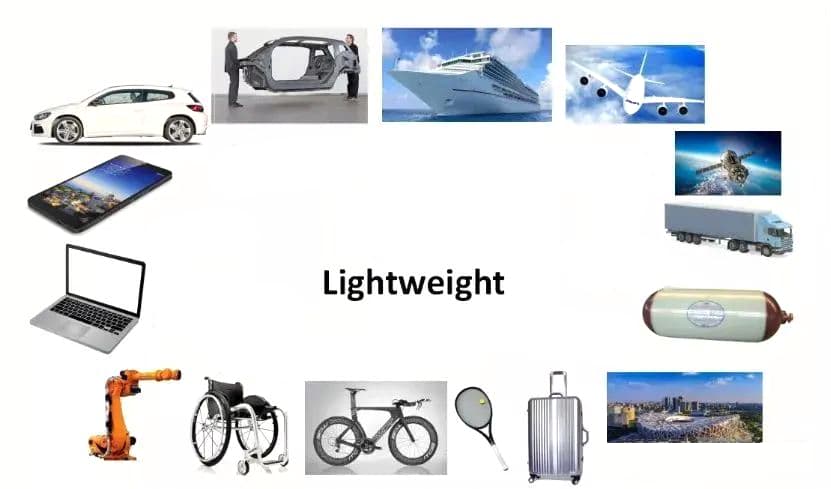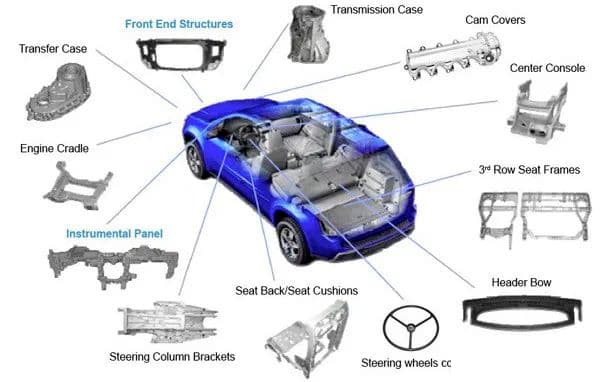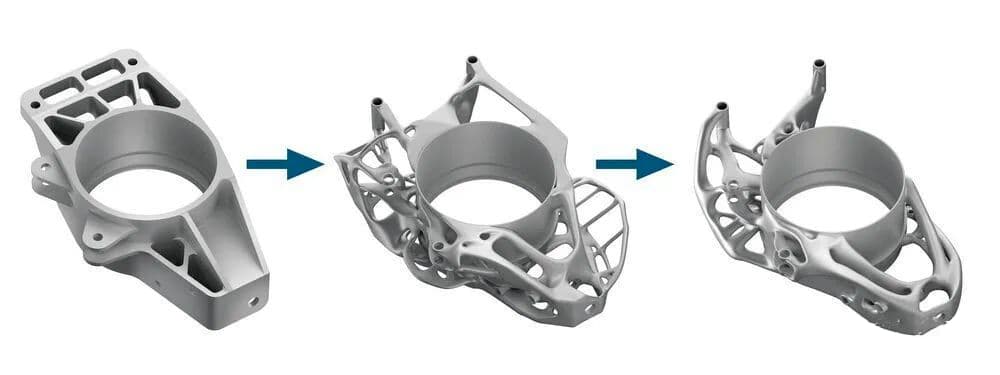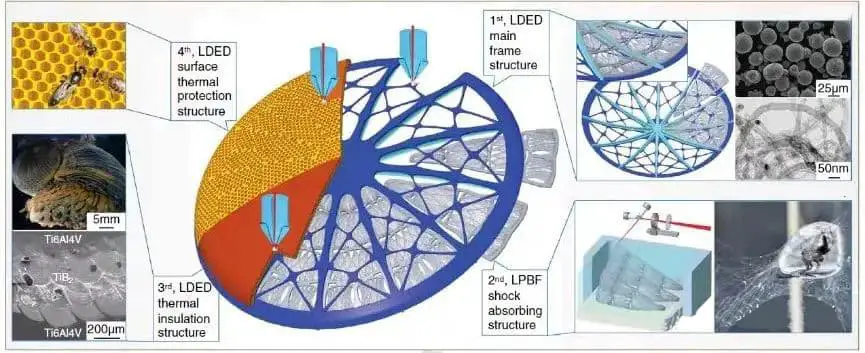Lightweight design is the future of production: it reduces carbon emissions and improves component performance.
The substantial environmental and economic benefits of pursuing innovations in lightweight design ensure its continued importance as a key area of investment and research in many industries, both now and in the years to come.
This article presents an overview of materials, techniques and future lightweight design solutions.

I. Economic Value of Lightweight Design
Essentially, lightweight design is the practice of reducing the amount of material in a component, without compromising reliability or functionality, to decrease its overall weight.
Currently, nations around the world are imposing requirements on all industries to reduce energy consumption and greenhouse gas emissions.
The lightweight design aims to provide manufacturers with the solution they need to meet the challenges of climate change, while achieving superior component performance and extending product life.
Most commonly seen in the automotive and aerospace industries, lightweight design improves fuel efficiency and increases the performance of airplanes and electric vehicles.
However, it is worth noting that lightweight design is also driving innovation in the construction, renewable energy and electronics and electrical production sectors. Lighter components reduce transportation and energy costs, and more resource-efficient production methods are adopted across these sectors.

II. Key materials in lightweight design
Lightweight materials are those that can be used to decrease the weight of the product and improve the overall performance of the product. Material weight reduction involves reducing weight by using lightweight metals and non-metals that meet mechanical performance requirements.
In the current automotive manufacturing sector, lightweight materials mainly include aluminum, magnesium and titanium alloys.
(1) Aluminum alloys
Aluminum is widely used in the automotive industry due to its lightweight properties. Automotive industry analysts suggest that using aluminum alloy parts can reduce vehicle weight by up to 50% without sacrificing safety or performance.
Aluminum's malleability, durability and light weight also make it a popular material for manufacturing consumer goods, electronics and aircraft.
As hybrid and electric vehicle trends continue, automakers will continue to consider aluminum as the material of choice due to its low cost, high performance and exceptional weight-saving characteristics.
(2) Magnesium Alloys
Magnesium alloys have the lowest density of all structural metals, being 33% lighter than aluminum, 50% lighter than titanium and 75% lighter than steel, potentially reducing component weight by up to 70% .
Magnesium has proven to be a valuable material for lightweight design engineers. It is easy to process, has good structural strength, and is widely used in the automotive and aerospace industries, as well as in the manufacturing of consumer goods. In the automotive sector, magnesium is currently used in powertrain cases or subcomponents.

Its low density and high specific strength mean that magnesium is used as a lightweight component in everything from planes and missiles to laptops and TVs. In addition to components and structural elements, magnesium-based batteries are currently being developed for the automotive industry.
An analysis by the US Automotive Materials Partnership indicated that 113 kg of magnesium could replace 226 kg of steel. 40 kg of magnesium could replace 68 kg of aluminum. This leads to a reduction in vehicle weight by 15%.
China plans to increase the amount of magnesium components used in vehicle production to 45 kg per vehicle by 2030.
The global magnesium market was valued at US$4.115 billion in 2019 and is expected to reach US$5.9281 billion by 2027. China produces about 85% of the world's magnesium.
(3) Titanium Alloys
Titanium has excellent corrosion resistance, antimagnetic properties, good shielding against electric fields and electromagnetic fields, resistance to extreme temperatures and greater tensile strength than steel, while weighing only half as much.
In recent years, the production of titanium alloys has made significant progress. They are used to manufacture turbine blades, aircraft structures, resistors, circuit boards, surgical instruments, and more. The automotive industry manufactures exhaust systems, engines, transmissions and lightweight structures from titanium alloy.
Global demand for titanium is expected to increase from US$24.7 billion in 2021 to US$33.5 billion in 2026.
III. Innovation in Lightweight Design and Manufacturing Techniques
As diverse industries strive to create lighter components to meet their environmental goals, innovative manufacturing techniques are driving this. Companies are seeking new methods to manufacture low-cost, high-performance components, and recasting is now largely replacing tixocasting.
One of the main advantages of recasting is its ability to fuse metals with a wide range of solid fractions, effectively and economically producing lightweight parts with high strength and good ductility.

Advances in additive manufacturing (3D printing) technologies have granted engineers unprecedented design freedom. Additive manufacturing allows manufacturers to manufacture complex geometries at significantly reduced costs compared to traditional die casting techniques.
It is also used to reduce part weight by transforming solid geometries into hollow structures or replacing solid structures with internal lattice designs. In fact, there is now a range of lightweight parts that can only be produced using additive manufacturing techniques.
V. Future solutions for weight reduction
The future of lightweight design will continue to focus on the use of aluminum, magnesium and titanium alloys, but will also incorporate composite materials such as carbon or fiberglass-reinforced polymers.

Many companies are currently focusing on developing lightweight plastic-based hybrid parts for the aerospace and automotive industries.
Innovations in computer software and additive manufacturing technologies will enable the development of lighter products, parts and structures.
Engineers can identify areas where weight can be reduced most effectively using specialized software, achieving maximum topology optimization for a variety of components. 3D digital models can then test the performance of lightweight parts to determine the best design options.
Biomimetic design and bionics could represent the future of lightweight design. Engineers and scientists are producing components based on lightweight, multifunctional structures found in nature.
Examples of this include the Airbus 2050 concept plane, which adopted a skeleton-based fuselage. Recent research focuses on the exoskeletons of single-celled plankton, honeycomb structures, grass stem structures, and epidermal cells and butterfly wings.
By combining continuous technological and scientific innovation with a deeper understanding of nature, manufacturers and industries will continue to develop lighter, stronger components to help humanity achieve common goals of reducing CO2 emissions and responding to climate change. .

























































